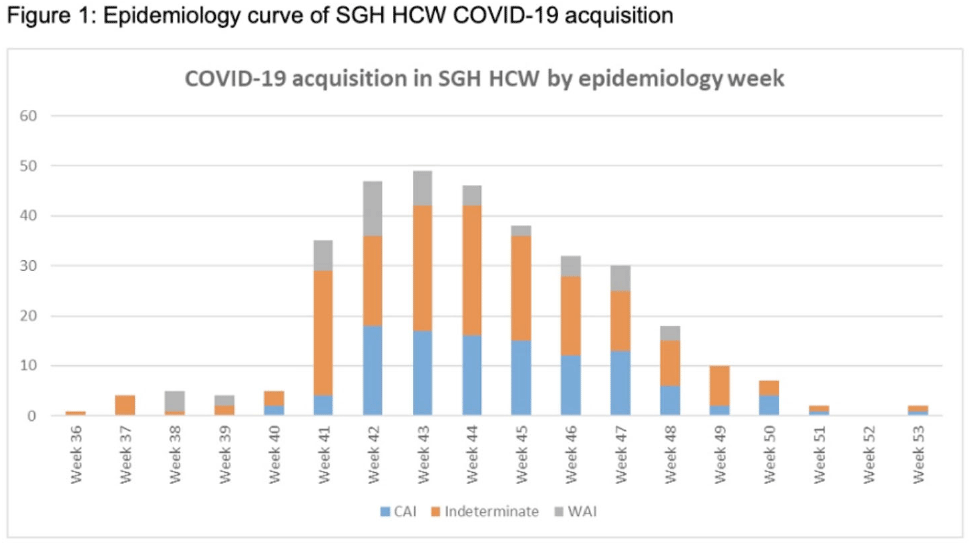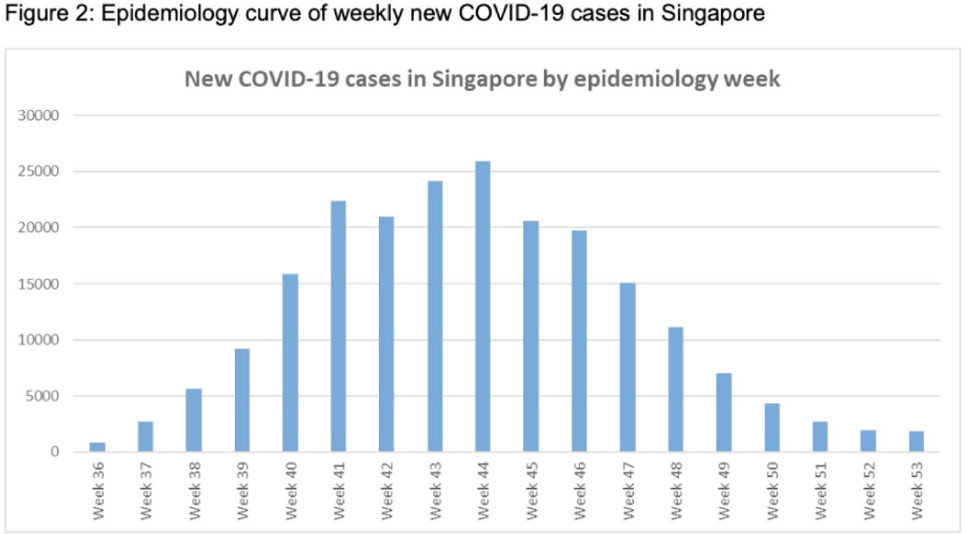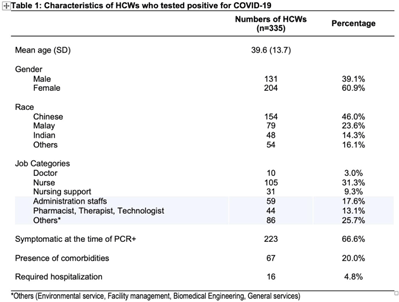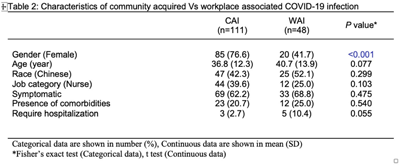105 results
Prediction model to identify infectious COVID-19 patients in the emergency department
-
- Journal:
- Antimicrobial Stewardship & Healthcare Epidemiology / Volume 4 / Issue 1 / 2024
- Published online by Cambridge University Press:
- 17 May 2024, e88
-
- Article
-
- You have access
- Open access
- HTML
- Export citation
Macrolide resistance of Mycoplasma pneumoniae in several regions of China from 2013 to 2019
-
- Journal:
- Epidemiology & Infection / Volume 152 / 2024
- Published online by Cambridge University Press:
- 18 April 2024, e75
-
- Article
-
- You have access
- Open access
- HTML
- Export citation
Bone-artefact production in late Neolithic central China: evidence from Pingliangtai
-
- Article
-
- You have access
- Open access
- HTML
- Export citation
Escaping the organization: Examining the influence of supervisor bottom-line mentality on employee withdrawal
-
- Journal:
- Journal of Management & Organization , First View
- Published online by Cambridge University Press:
- 06 March 2024, pp. 1-22
-
- Article
- Export citation
Implementing a continuous quality-improvement framework for tuberculosis infection prevention and control in healthcare facilities in China, 2017–2019
-
- Journal:
- Infection Control & Hospital Epidemiology / Volume 45 / Issue 5 / May 2024
- Published online by Cambridge University Press:
- 25 January 2024, pp. 651-657
- Print publication:
- May 2024
-
- Article
-
- You have access
- Open access
- HTML
- Export citation
Mental health symptoms and their associated factors among pharmacists in psychiatric hospitals during the early stage of the COVID-19 pandemic
-
- Journal:
- Cambridge Prisms: Global Mental Health / Volume 10 / 2023
- Published online by Cambridge University Press:
- 06 November 2023, e77
-
- Article
-
- You have access
- Open access
- HTML
- Export citation
THE PROGRESS OF 14C-AMS ANALYSIS FOR ULTRA-SMALL SAMPLES AT XI’AN AMS CENTER
-
- Journal:
- Radiocarbon , First View
- Published online by Cambridge University Press:
- 15 August 2023, pp. 1-18
-
- Article
- Export citation
Modelling the wall friction coefficient for a simple shear granular flow in view of the degradation mechanism
-
- Journal:
- Journal of Fluid Mechanics / Volume 969 / 25 August 2023
- Published online by Cambridge University Press:
- 14 August 2023, A7
-
- Article
-
- You have access
- Open access
- HTML
- Export citation
Social mixing and network characteristics of COVID-19 patients before and after widespread interventions: A population-based study
-
- Journal:
- Epidemiology & Infection / Volume 151 / 2023
- Published online by Cambridge University Press:
- 14 August 2023, e141
-
- Article
-
- You have access
- Open access
- HTML
- Export citation
Desorption behaviour of polymers on sepiolite surfaces under high-temperature and high-salinity conditions
-
- Journal:
- Clay Minerals / Volume 58 / Issue 3 / September 2023
- Published online by Cambridge University Press:
- 02 August 2023, pp. 235-244
-
- Article
- Export citation
Implications on growth performance, glucose metabolism, PI3K/AKT pathway, intestinal flora induced by dietary taurine in a high-carbohydrate diet for grass carp (Ctenopharyngodon idella)
-
- Journal:
- British Journal of Nutrition / Volume 131 / Issue 1 / 14 January 2024
- Published online by Cambridge University Press:
- 26 July 2023, pp. 27-40
- Print publication:
- 14 January 2024
-
- Article
- Export citation
Stick-slip squirmers: slip asymmetry can qualitatively change self-swimming characteristics of squirmers
-
- Journal:
- Journal of Fluid Mechanics / Volume 967 / 25 July 2023
- Published online by Cambridge University Press:
- 20 July 2023, A29
-
- Article
-
- You have access
- Open access
- HTML
- Export citation
Study on the improvement of cognitive function of college students’ psychological depression by the combination of professional quality and psychosocial intervention
-
- Journal:
- CNS Spectrums / Volume 28 / Issue S1 / March 2023
- Published online by Cambridge University Press:
- 09 March 2023, pp. S23-S24
-
- Article
-
- You have access
- Export citation
5 - Women Activists, Gendered Power and Postfeminism in Taiwan’s ‘Sunflower Movement’
-
-
- Book:
- Feminism and Protest Camps
- Published by:
- Bristol University Press
- Published online:
- 18 January 2024
- Print publication:
- 31 January 2023, pp 78-96
-
- Chapter
- Export citation
Population-attributable risk of psychiatric disorders for suicide among adolescents and young adults in Taiwan
-
- Journal:
- Psychological Medicine / Volume 53 / Issue 13 / October 2023
- Published online by Cambridge University Press:
- 09 November 2022, pp. 6161-6170
-
- Article
-
- You have access
- Open access
- HTML
- Export citation
Transmission roles of symptomatic and asymptomatic COVID-19 cases: a modelling study
-
- Journal:
- Epidemiology & Infection / Volume 150 / 2022
- Published online by Cambridge University Press:
- 27 September 2022, e171
-
- Article
-
- You have access
- Open access
- HTML
- Export citation
Effectiveness of enhancing contact model on reducing family caregiving burden and improving psychological wellbeing among caregivers of persons with schizophrenia in rural China
-
- Journal:
- Psychological Medicine / Volume 53 / Issue 12 / September 2023
- Published online by Cambridge University Press:
- 26 September 2022, pp. 5756-5766
-
- Article
- Export citation
The effect of joint involvement of nurse and physician in hospice care on terminal cancer patients on do-not-resuscitate orders signed by surrogates
-
- Journal:
- Palliative & Supportive Care / Volume 21 / Issue 4 / August 2023
- Published online by Cambridge University Press:
- 27 June 2022, pp. 670-676
-
- Article
- Export citation
COVID-19 among healthcare workers of a tertiary-care hospital in Singapore
-
- Journal:
- Antimicrobial Stewardship & Healthcare Epidemiology / Volume 2 / Issue S1 / July 2022
- Published online by Cambridge University Press:
- 16 May 2022, pp. s34-s35
-
- Article
-
- You have access
- Open access
- Export citation
Linking sporadic hospital clusters during a community surge of the severe acute respiratory coronavirus virus 2 (SARS-CoV-2) B.1.617.2 delta variant: The utility of whole-genome sequencing
-
- Journal:
- Infection Control & Hospital Epidemiology / Volume 44 / Issue 6 / June 2023
- Published online by Cambridge University Press:
- 27 April 2022, pp. 1014-1018
- Print publication:
- June 2023
-
- Article
-
- You have access
- Open access
- HTML
- Export citation


























